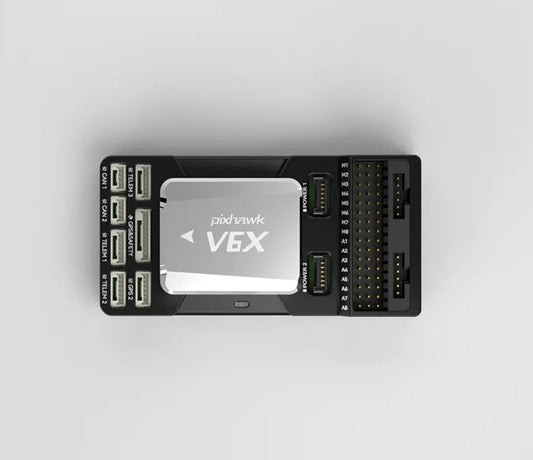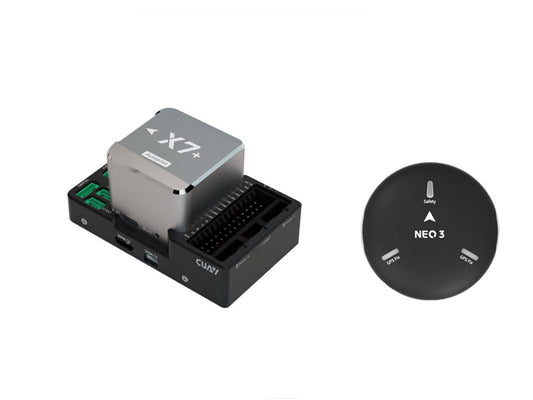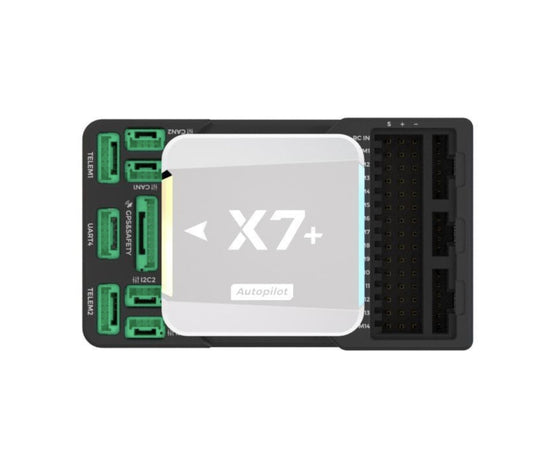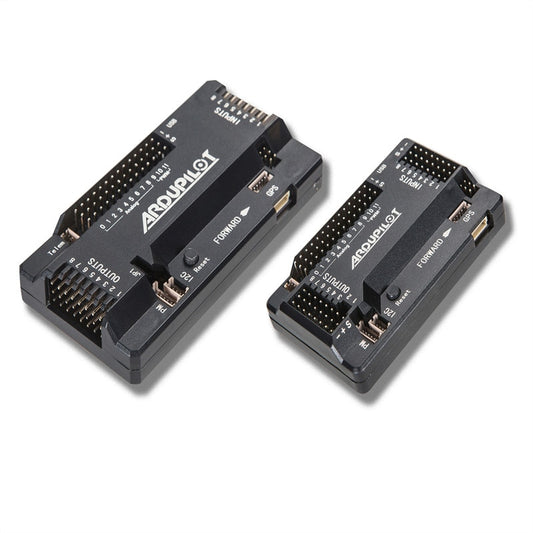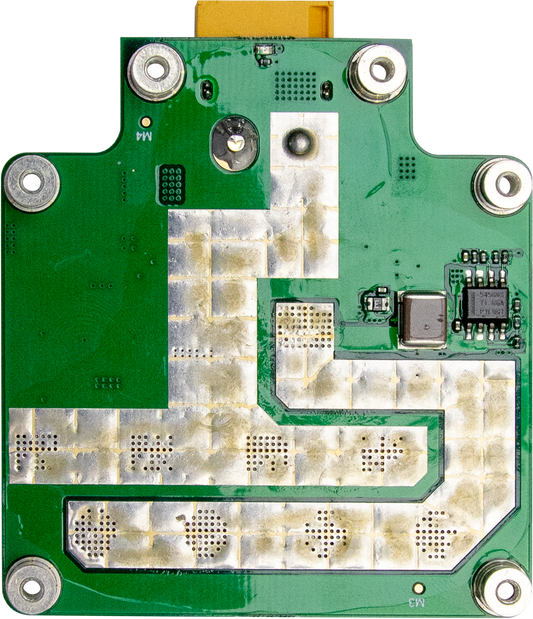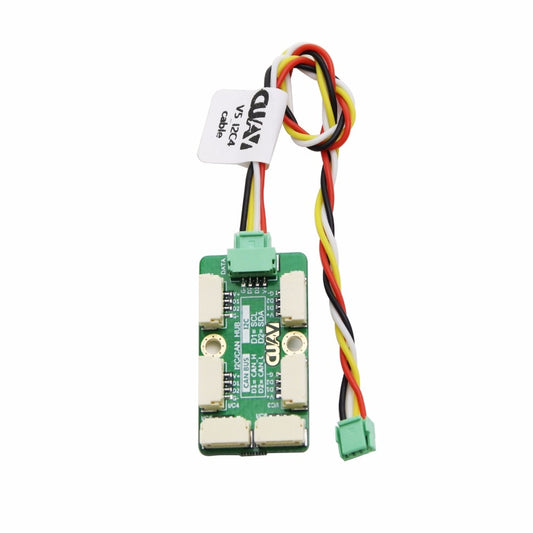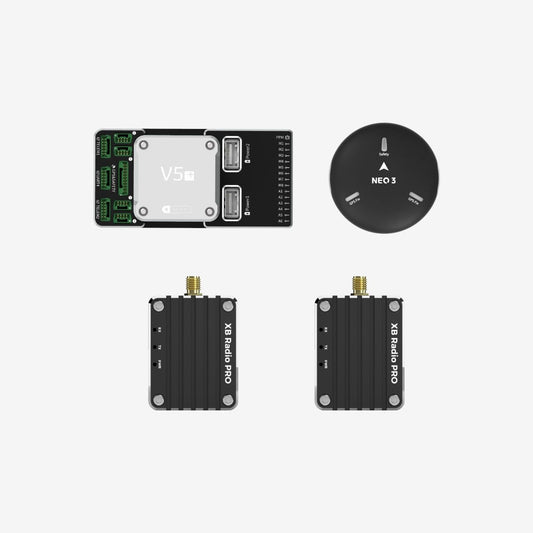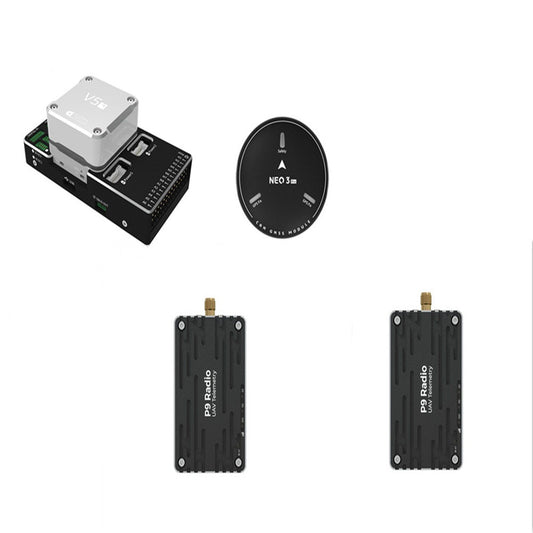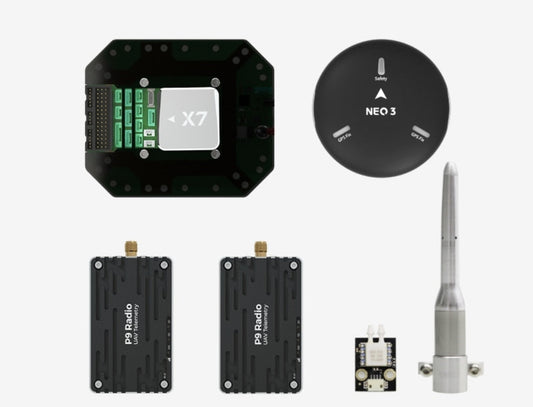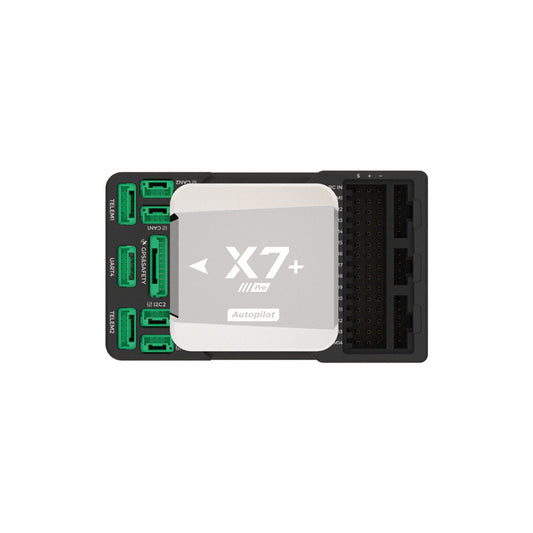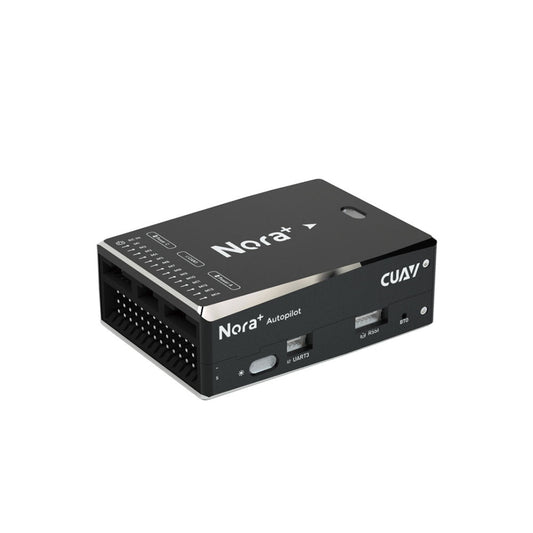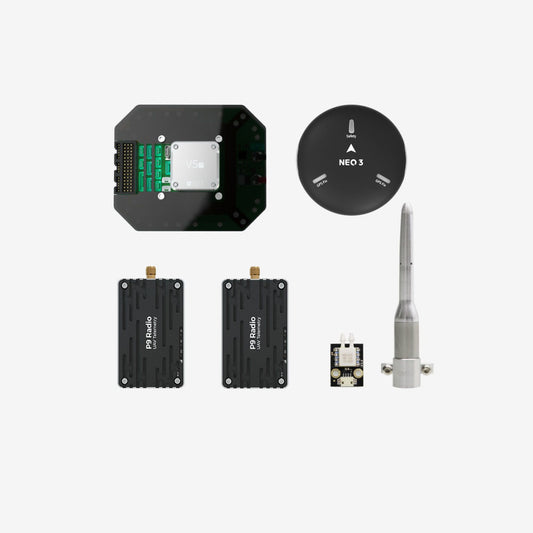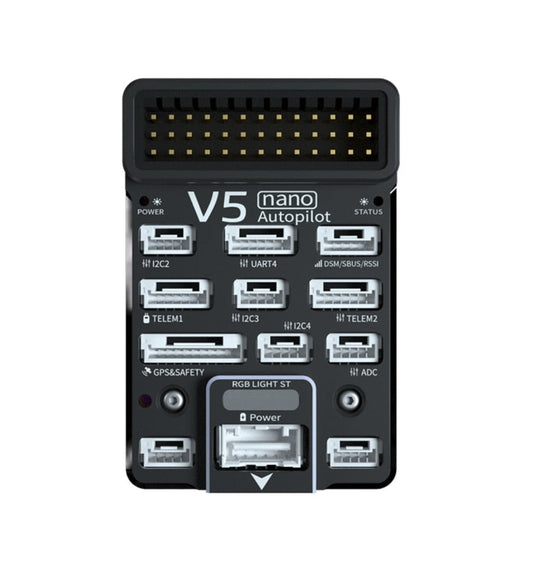-
CUAV Pixhawk V6X Autopilot PX4 Ardupilot Flight Controller - STM32H753IIK6 Processor RM3100 Compass Customize Carrier Board and Core With NEO 3 Pro
Regular price From $380.95 USDRegular priceUnit price per -
CUAV NEW X7+ Flight Controller NEO 3 Pro GPS Pixhawk Open Source PX4 ArduPilot GNSS FPV RC Drone VTOL Quadcopter Combo
Regular price From $407.11 USDRegular priceUnit price per -
CUAV New C-ADB Secondary Development Pixhawk Flight Controller Debug Debugging Adapter
Regular price $179.17 USDRegular priceUnit price per -
CUAV X7 Plus Flight Controller - Open Source For APM PX4 Pixhawk FPV Fixed wing RC UAV Drone Quadcopter
Regular price From $605.89 USDRegular priceUnit price per -
CUAV X25 EVO Autopilot Flight Controller - STM32H7, Triple IMU, Dual Baro, RM3100, CAN, 16 PWM, PX4/ArduPilot
Regular price From $446.00 USDRegular priceUnit price per -
CUAV 7-Nano Autopilot Flight Controller
Regular price From $189.00 USDRegular priceUnit price per -
CUAV NEW Open Source Autopilot PIX X7+ Pro Flight Controller NEO V2 3 Pro M9N CAN GPS PX4 FPV RC Parts Drone Quadcopter
Regular price From $1,515.65 USDRegular priceUnit price per -
CUAV APM2.6 ArduPilot Mega Flight Control Board Pixhawk Exterbal Compass Protective Case
Regular price $104.33 USDRegular priceUnit price per -
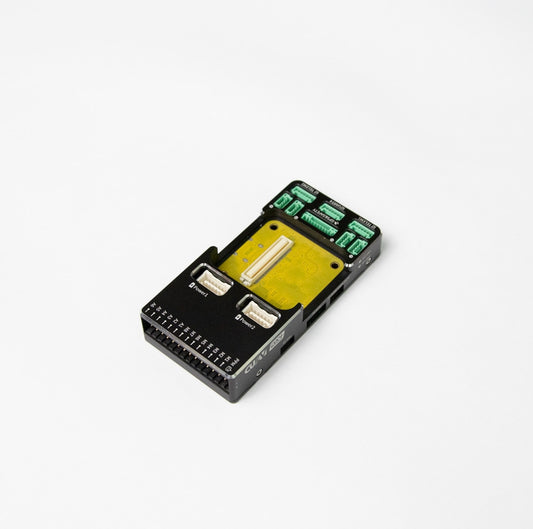
CUAV V5+ Carrier Board Autopilot Pixhawk Flight Controller - FPV RC Drone Quadcopter Helicopter VTOL
Regular price $192.64 USDRegular priceUnit price per -
CUAV NEW V5+ autopilot flight controller - base on FMU V5 Open source hardware for FPV RC Drone Quadcopter Helicopter Pixhawk
Regular price From $554.59 USDRegular priceUnit price per -
CUAV X25 Super Pixhawk Autopilot Flight Controller – PX4 / ArduPilot Compatible, High-Voltage UAV Core
Regular price $999.00 USDRegular priceUnit price per -
CUAV X25 EVO Pixhawk Autopilot Flight Controller – PX4 / ArduPilot Compatible, Next-Gen UAV System Core
Regular price From $446.00 USDRegular priceUnit price per -
CUAV CAN PDB CPDB PRO High Voltage Divider Pixhawk Pixhack Flight Controller For RC Drone Helicopter Multi-rotor UAVs
Regular price $112.87 USDRegular priceUnit price per -
CUAV V5 Autopilot Wires Connection Pixhack Drone Flight Controller Cable Accessories RC Parts
Regular price From $9.12 USDRegular priceUnit price per -
CUAV New Match Multi Rotor Copter Package - V5+ Autopilot Flight Controller NEO 3 GPS And XBEE Pro Telemetry Set
Regular price $1,066.02 USDRegular priceUnit price per -
CUAV P9 Radio Data And Pixhawk Drone Fpv V5+ Flight Controller NEO 3 Pro GPS Telemetry Combo
Regular price $1,645.35 USDRegular priceUnit price per -
CUAV New CAN PDB Carrier Board - Pixhawk Pixhack Px4 PIX Autopilot Flight Controller Power Module RC Drone Helicopter
Regular price $282.91 USDRegular priceUnit price per -
CUAV New One To Multiple Star Package With V5+ Flight Flightcase RTK 9Ps GPS And P900 Radio Telemetry Combo Kit
Regular price $5,056.40 USDRegular priceUnit price per -
CUAV Pixhawk X7+ Pro Industrial Flight Controller With NEO 3 Pro GPS And CAN PMU Power Module Combo
Regular price From $1,123.17 USDRegular priceUnit price per -
CUAV New One-to-Multiple With V5+ Flight Controller RTK 9Ps GPS P9 Radio Telemetry GNSS Kit Set
Regular price $3,832.45 USDRegular priceUnit price per -
CUAV Pixhawk Drone Fpv V5+ Flight Controller NEO 3 Pro GPS And Airspeed Tube SKYE Module Combo
Regular price $1,105.22 USDRegular priceUnit price per -
CUAV CAN PDB Power Module Carrier Board And X7+ Pro Core Pixhawk Flight Controller Autopilot
Regular price $1,656.74 USDRegular priceUnit price per -
CUAV Nora+ Open Source Flight Controller NEO V2 - 3 M8N M9n Can GPS APM PX4 Pixhawk FPV RC Drone Quadcopter Instead V3x Autopilot
Regular price From $642.20 USDRegular priceUnit price per -
CUAV VTOL Kit Set X7 Core Carrier Board - With NEO 3 GPS P9 Telemetry Radio For Open Source Drone Flight Controller Pixhawk
Regular price $1,904.13 USDRegular priceUnit price per -
CUAV NEW X7+ PRO Flight Controller - Open Source PX4 ArduPilot FPV RC Drone Quadcopter Pixhawk
Regular price $1,515.65 USDRegular priceUnit price per -
CUAV NEW Pixhack Pixhawk V5+ Autopilot - FPV RC Drone Quadcopter Helicopter Flight Controller And NEO V2 3 Pro GPS Combo
Regular price From $616.54 USDRegular priceUnit price per -
CUAV New Open Source Nora+ Flight Controller NEO 3 Pro M9N CAN GPS APM PX4 Pixhawk FPV RC Drone Quadcopter Integrated Autopilot
Regular price From $637.99 USDRegular priceUnit price per -
CUAV Open Source NEW Nora+ Integrated Autopilot Flight Controller PX4 ArduPilot Pixhawk FPV RC Drone Quadcopter Helicopter
Regular price $637.99 USDRegular priceUnit price per -
CUAV VTOL Rc Drone Pixhawk Autopilot V5+ Core Carrier Board Package With NEO 3 GPS And P9 Telemetry Combo
Regular price $1,869.14 USDRegular priceUnit price per -
CUAV Pixhawk Drone Fpv V5+ Flight Controller NEO 3 Pro GPS And CAN Power PMU Module Combo
Regular price $1,057.20 USDRegular priceUnit price per -
CUAV CAN PDB X7+ Core Carrier Board Autopilot Pixhawk Flight Controller For RC Drone Helicopter Power Module Combo
Regular price $877.02 USDRegular priceUnit price per -
CUAV CAN PDB Autopilot Carrier Board V5+ Plus Core - RC Drone Pixhawk Flight Controller
Regular price $826.81 USDRegular priceUnit price per -
CUAV Open Source Aircraft Flight Controller Baseboard Module Integration Customized
Regular price $643.48 USDRegular priceUnit price per -
CUAV V5 Nano Small Size Autopilot Drone Parts - Support Ardupilot PX4 Pixhawk Flight Controller
Regular price From $552.41 USDRegular priceUnit price per -
CUAV NEW Drone UAV FPV V5+ Autopilot Pixhawk Flight Controller With TF Luna Radar Lidar Module
Regular price $657.82 USDRegular priceUnit price per -
CUAV NEW V5+ Hardware Design Pixhack Pixhawk Autopilot Flight Remote Controller FPV RC Drone Quadcopter Helicopter Transport
Regular price $408.00 USDRegular priceUnit price per
